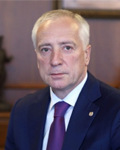Tomsk Region

- NationRussian Federation
- Government NameTomsk Region
- GovernorMazur Vladimir Vladimirovich
Symbol

Flag
History
- 1604: Tomsk was founded in 1604 by Tsar Boris Godunov
- 1738: Mail service was inaugurated and all freight now passed through Tomsk.
- 1804: A new period of the city's history began in 1804, when it was chosen as the administrative center of a new province and developed into a center with a city and town councils and a police department.
- 1917: After the Revolution in 1917, Tomsk became part of the Siberian and later the West Siberian Territory.
- 1937: Tomsk and the adjoining territories became part of Novosibirsk Region.
- 1944: The decree creating Tomsk Region was signed in August 4, 1944.
- 1991: Tomsk was awarded the status of historic city with a protected area of 950 hectares.
Topographic Feature and Characteristics
- A large part of the region (57%) is covered with forests with well-defined central taiga, southern taiga, and forest steppe zones. The areas of Tomsk Region bordering on Tyumen and Omsk Regions and part of Novosibirsk Region extend over a mostly boggy, nearly uninhabited plain. Tomsk continues to be a scientific and educational center, annually graduating 5000 specialists with higher education and an equal number with secondary vocational education.
Basic Information
| Contents | |
|---|---|
| Geography/Climate |
|
| Population |
|
| Major Event |
|
| Sisterhood & Friendship Provinces / Cities |
|
Economic Status
| Contents | |
|---|---|
| Economy |
|
| Industry |
|
| Product |
|
Others
- Contact:Ministry of International and Regional Relations
- Address:6 Lenin Square, Tomsk, Russia, 634050
- Tel.:7-3822-51-09-39
- Fax.:7-3822-51-11-99
- Official Website : http://www.tomsk.gov.ru